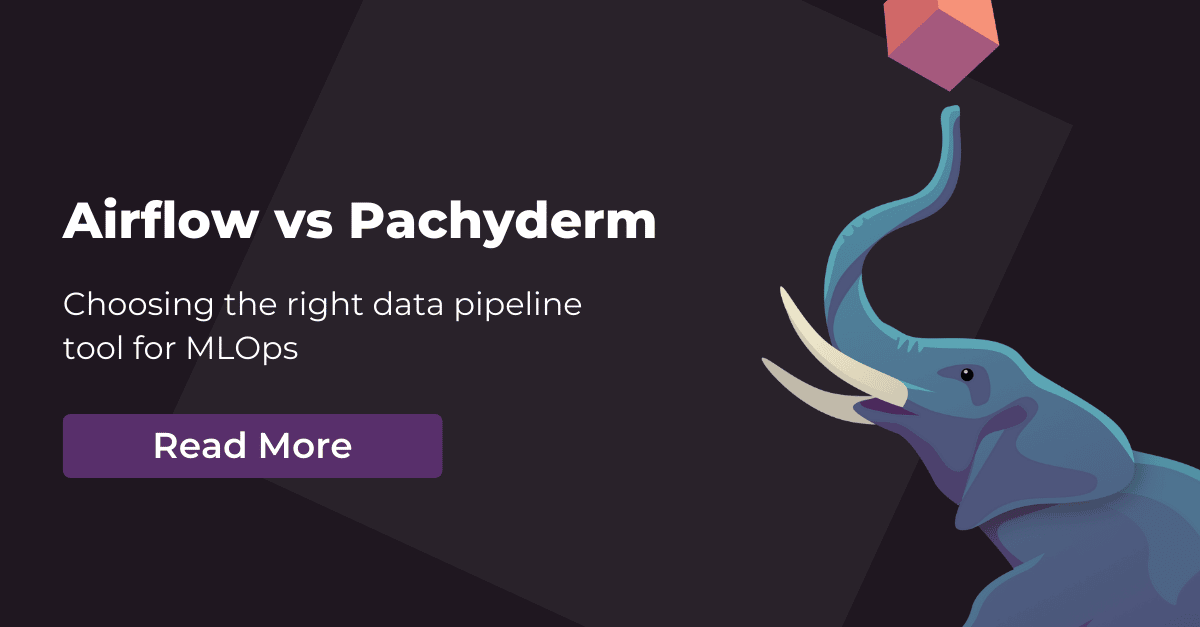A machine learning (ML) model finds patterns, makes decisions based on the data it encounters in training, and applies this logic to real-world data in production. Reproducible outputs within your enterprise data pipeline will prove your model is reliable and ensures trustworthy results. If you can replicate your ML outputs, teams are more productive and collaborative, and the process is compliant with stakeholders and auditors.
So, why are reproducible data science pipelines necessary? With the use of automated data pipelines, you can deploy ML models with ease. By utilizing reproducible models, data pipeline automation collects and analyzes data faster, which helps engineers observe, monitor, and retrain models.
In this article, we’re going to go over everything you need to know about data pipelines, including what can be automated, data pipeline best practices, and how to improve your workflow within your specific industry. Read on to learn about:
- What You Should Know About Data Pipeline Automation
- Automated Data Pipelines and Data Consistency
- How Automated Data Pipelines Work Within Your Business
What You Should Know About Data Pipeline Automation
A data pipeline refers to moving data from one system to another to perform different tasks. This includes automating data warehousing, analyzing data, or maintaining a siloed data source for redundancy purposes. In some instances, data is processed in real time. In others, the information is loaded into a database or warehouse for later use in various applications.
A data pipeline is a complex arrangement of data flows that perform many jobs. The term “data pipeline” can refer to different purposes and categories for workflow management such as:
- Data Pipeline – A data pipeline can be a step or a series of end-to-end steps that move or transform data between two endpoints.
- ETL Pipeline – ETL (Extract, Transform, and Load) data pipelines extract data from one system and move it to a target system, converting the data to match the new system. ETL pipelines are commonly used in business analytics and SaaS applications.
- DAG or Data Flow – DAG (directed acyclic graph) is one way of describing a full architecture for data pipelines where the execution stages are not sequential and there are no cycles.
- Data Orchestration – The overarching practice of managing all of your DAGs, data sources, and data governance.
You can automate your data ingestion with data-driven pipelines. Pipelines like Pachyderm’s are only triggered when they encounter new data, fetching and analyzing the information without wasting processing time on re-ingesting the full dataset.
End-to-end data pipeline automation can standardize data formats and properties for your model and output needs: resize, rename, cleanse, and validate any files with any language in Pachyderm. This flexibility gives your business the ability to collect structured or unstructured data and organize it so that the data becomes information your teams can use.
To create successful machine learning-driven products, your data must be accessible, clean, and fully versioned. This way, science and engineering teams can learn from pipeline and model errors, replicate unexpected outcomes, and in extreme cases, roll your build back to one that worked in the past.
Automated data lineage allows you to change and update pipelines,iterate quickly, or change data types if necessary. The best part is with containerized pipelines, you will be able to make transformations in the coding language that gives your team the most confidence.
Automated Data Pipelines and Data Consistency
The sheer volume of data businesses collect and use quickly becomes an issue if the data becomes unmanageable, which is where leveraging data pipeline automation comes in to play. By establishing data access for pipelines, you can ensure your models are reporting and retrieving the right data every time.
With the right data pipeline and automation system, you can clean and prepare the information into an ML model that is scalable with your business. This leads to better long-term analysis outcomes, happier customers, and more reliable processes that meet SLAs.
At the end of the day, creating repeatable ML processes will save time and money while improving your business’ day-to-day operations. By reducing manual handoffs, you can prevent delays, and unnecessary duplication of data, and free up employee time. Imagine a business needs to process one million data points to generate a report. Without ML and automation, the time and work hours this would take would cost more than the business itself.
MLOps is founded on the principles of CI/CD for data and code. Pipeline automation and datum-based processing allows data engineering teams to optimize the speed and the cost of their data management workflows.
Modern end-to-end pipeline automation can use custom logic to handle repetitive, complex processes that can be error-prone when done manually. Furthermore, with immutable data lineage, it is much easier to spot errors within datasets and fix them across the board.
How Automated Data Pipelines Work Within Your Business
Enterprises face the biggest challenges in pipeline automation because of the different types of data sources they use. These include:
- Multiple repositories for streaming data
- The internet of things
- Sensor information
- Structured data
- Unstructured data
This data can appear in different formats, on different platforms, and on their own delivery schedules.
Large companies also have more stakeholders. Stakeholders such as data engineers are building surface data systems for data scientists, product teams, all the way to customer success, executive, and UI/UX teams.
As a result, data-focused businesses are increasingly turning to pipeline applications for their data ingestion and processing needs.
Similarly, small businesses (SMBs) are increasingly focused on leveraging their data, especially in sectors with significant digital adoption. Logistics, e-commerce, and fintech are all making significant strides with data-centric pipelines for use cases like analytics, trend prediction, and churn analysis.
The only problem SMBs are facing now is that the small-batch automation tools they relied on in the past can’t scale with the volume of data or the transformations growing companies are looking to implement.
Leave Your Data Pipeline Automation Needs to Pachyderm
Pachyderm’s data-driven pipelines help companies process large volumes of data effectively, reduce costs with data-driven processing, and offer maximum flexibility to process structured and unstructured data in a single pipeline tool.
Instead of painstakingly pulling together a secure environment on your own, Pachyderm can help your enterprise build the infrastructure and support you throughout its lifecycle with a full range of features such as the Pachyderm console, and RBAC access controls, and centralized multiple cluster management.
If you’re ready to free up time, cut costs, and prepare your infrastructure for ease and consistency. Request a demo for an interactive experience with our ML data foundation, get your questions answered, and see for yourself why our programming can help you excel.


